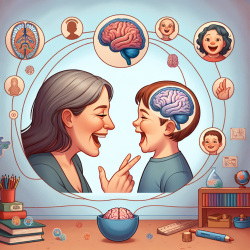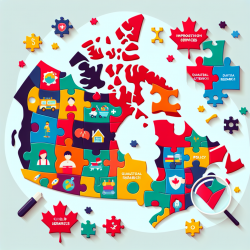Introduction
In the realm of speech-language pathology, understanding the intricate connections between neural networks and socioemotional behaviors is crucial for creating effective interventions, especially for children. A recent study titled A neural network underlying intentional emotional facial expression in neurodegenerative disease sheds light on the neural mechanisms that underpin the ability to intentionally express emotions through facial expressions. This research not only provides insights into neurodegenerative diseases but also offers valuable implications for practitioners working with children.
The Study: Key Findings
The study explored how deficits in intentional facial expression of emotion are linked to specific patterns of brain atrophy in patients with neurodegenerative diseases. By analyzing 133 participants, including patients with Alzheimer's disease, frontotemporal dementia, and other conditions, the researchers discovered that intentional emotional imitation deficits were associated with rightward cortical atrophy patterns. This pattern is homologous to the left lateralized speech production network, indicating a potential neural mechanism underlying socioemotional communication deficits.
Key findings include:
- A rightward atrophy pattern predicted patients' ability to intentionally imitate emotional facial expressions.
- Deficits in intentional emotion imitation were linked to fundamental socioemotional deficits.
- Intentional emotional expression predicted caregiver ratings of empathy and interpersonal warmth.
Implications for Practitioners
For practitioners working with children, these findings emphasize the importance of fostering intentional emotional expression skills. By understanding the neural underpinnings of these skills, practitioners can develop targeted interventions that enhance children's socioemotional communication abilities. Here are some practical applications:
- Enhancing Empathy: Encourage activities that promote empathy and interpersonal warmth, such as role-playing and emotion recognition games.
- Facial Expression Training: Implement exercises that focus on intentional facial expression, helping children to better convey emotions and understand others' feelings.
- Neuroplasticity and Learning: Utilize the concept of neuroplasticity to create adaptive learning environments that strengthen neural pathways associated with emotional expression.
Encouraging Further Research
While this study provides valuable insights, it also opens the door for further research. Practitioners are encouraged to explore the following areas:
- Longitudinal Studies: Investigate how intentional emotional expression skills develop over time in children and how they impact social and academic outcomes.
- Cross-Disciplinary Approaches: Collaborate with neuroscientists, psychologists, and educators to create comprehensive intervention programs.
- Technology Integration: Explore the use of technology, such as virtual reality and biofeedback, to enhance emotional expression training.
Conclusion
Understanding the neural basis of intentional emotional expression provides a foundation for improving child outcomes in speech-language pathology. By integrating these insights into practice, practitioners can help children develop essential socioemotional skills, leading to better communication and learning experiences.
To read the original research paper, please follow this link: A neural network underlying intentional emotional facial expression in neurodegenerative disease.










